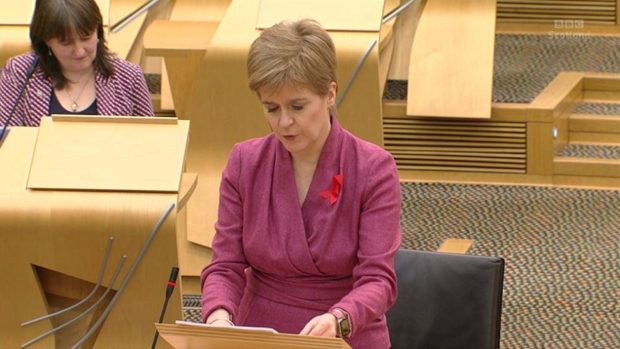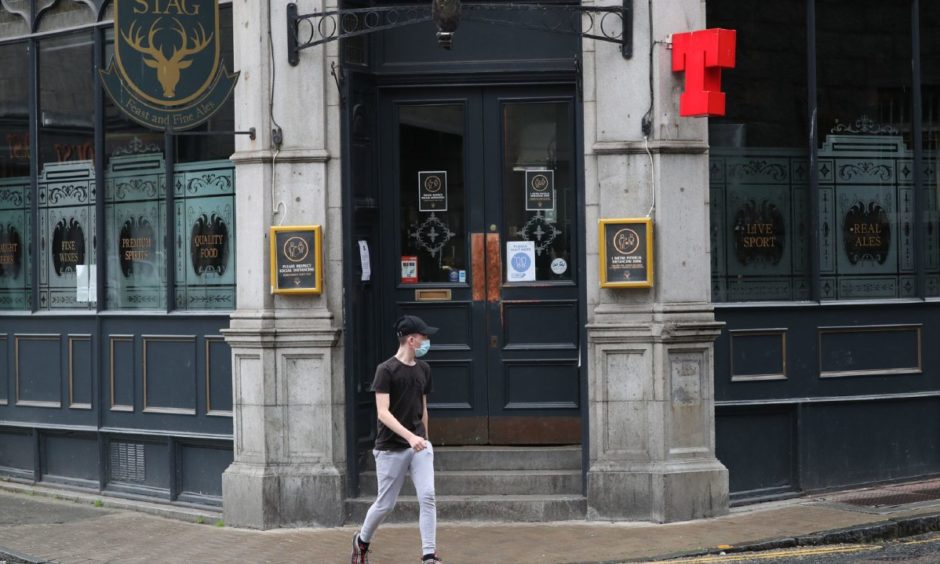The north-east will be kept under close review as medical experts consider if tougher coronavirus restrictions should be imposed.
First Minister Nicola Sturgeon announced there will be no immediate changes to the tiers across Scotland this week – but warned the government would “continue to look very carefully” at Aberdeen City and Aberdeenshire.
The two councils were widely expected to be moving up a level into tier three after a sharp rise in Covid-19 cases.
Cases have risen by 68% in Aberdeen and by 42% in Aberdeenshire.
Ms Sturgeon said: “We have been looking and will continue to look very carefully in the days to come at both Aberdeen City and Aberdeenshire.
“In both these areas cases have increased quite sharply. The number of cases is below the national average, but it is higher than some level three areas, such as Angus.
“However, there is a need to understand more deeply the extent these cases are being driven by specific outbreaks that are being actively managed.
“For instance, within food processing plants and care settings versus a wider and more general increase in community transmission.
“That would obviously be a concern, as we go into the winter period.”
Today’s announcement will have many north-east businesses breathing a sigh of relief, but the situation could change in a matter of days as health officials continue to assess the situation.
The north-east will be considered “in greater depth” over the next few days by Scotland’s chief medical officer Gregor Smith and the national incident management team.
After that, discussions will be held with both councils and NHS Grampian’s director of public health to determine whether one or both council areas should move up a level.
Ms Sturgeon said: “Given the degree of uncertainty in the information we have so far, and obviously in recognition of the economic and social impact, we have decided to await this further analysis before reaching a firm conclusion.
“If this information does justify a move to level three for one or both, we will set this out either at next week’s review, or if the situation merited it, earlier than that.”
The Highlands, Moray, Shetland, Orkney and the Western Isles will all remain in tier one, with no changes to their restrictions.
What would tier three mean?
If the north-east was to move up a level, it would put it back into a situation similar to the lockdowns seen earlier this year.
People would no longer be allowed to travel out of their local council area except for essential reasons, such as work which cannot be done from home.
Bars and restaurants would have to close by 6pm and would not be allowed to serve alcoholic drinks.
Adults would also no longer be permitted to participate in outdoor contact sport.
‘We are making progress’
The average number of coronavirus cases recorded each day has dropped by more than 150 in the last fortnight.
In the seven days to November 13, there were an average of 1,116 coronavirus cases recorded each day.
But by November 27, that had fallen to an average of 863 new cases a day – a drop of more than a fifth.
Ms Sturgeon said that the number of people in hospital, and the number of people requiring intensive care, were also “coming down”.
She said: “I can say with some confidence we are making progress, and good progress at this stage.”
However, she warned that in some areas the level of infections was still “higher than we need it to be”.
Today’s figures
Scotland has recorded 34 deaths from coronavirus and 754 positive cases in the past 24 hours.
The death toll under this measure – of people who first tested positive for the virus within the previous 28 days – is now 3,759.
Ms Sturgeon said the daily test positivity rate is 7.3%, up from 6.1% on Monday.
A total of 95,811 people have tested positive in Scotland, up from 95,058 the previous day.
There are 1,021 people in hospital confirmed to have the virus, a fall of 20 in 24 hours.
Of these patients, 70 are in intensive care, down by five.


